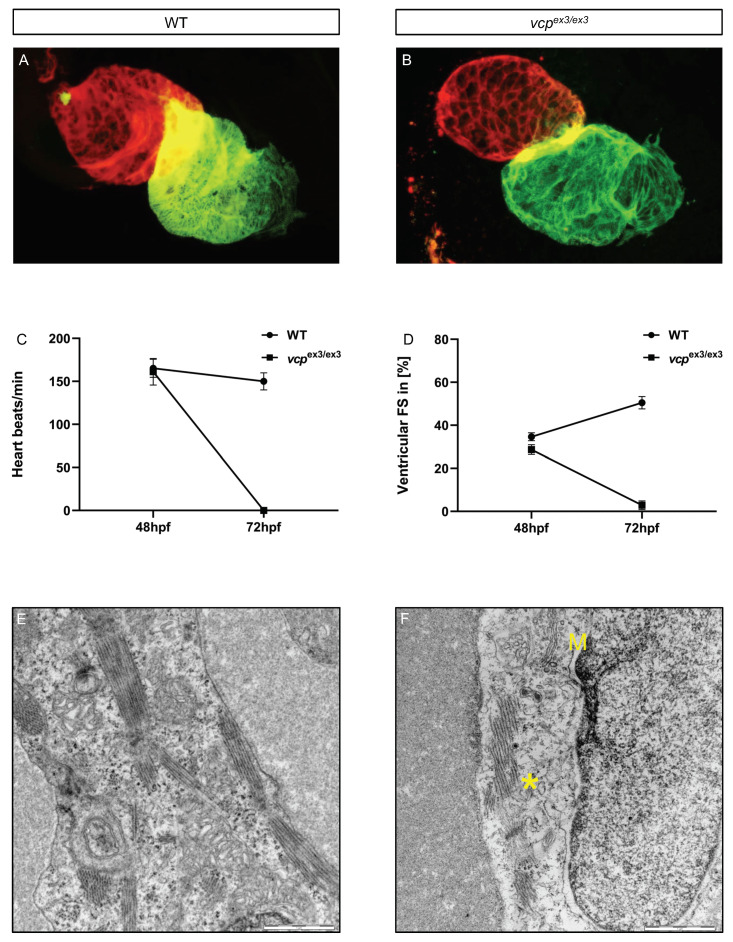Fig. 3
Genetic loss of vcp leads to heart failure in homozygous mutant embryos. (A,B) Analysis of the distribution of meromysin (MF20, green) and atrial-specific myosin heavy chain (S46, red) shows normal expression levels and patterns in vcpex3/ex3 embryos, suggesting regular heart chamber specification and cardiomyocyte differentiation. (C) Heart rate quantification at 48 hpf does not reveal any alterations in vcpex3/ex3 embryos (161 ± 15 heart beat/min) compared to age-matched clutchmates (165 ±10 heart beat/min) (N = 3, n = 11/12, mean ± S.D, p = 0.7000 determined using two-tailed t-test). At 72 hpf, vcpex3/ex3 embryos show highly significant reduction in the heart rate (N = 3, n = 9/12; vcpex3/ex3 0 heart beat/min; WT 150 ± 10 beats/min; mean ± S.D p ≤ 0.0001; two-tailed t-test). (D) Measurement of ventricular fractional shortening at 48 hpf shows no significant differences between WT (34.64 ± 8%) and vcpex3/ex3 (28.73 ± 7%) embryos (N = 3, n = 19/9, mean ± S.D; p = 0.1000; two-tailed t-test). At 72 hpf, fractional shortening is significantly reduced in vcpex3/ex3 embryos (N = 3, n = 12, mean ± S.D; FS vcpex3/ex3 3 ± 7%; FS WT 50.48 ± 10%; p ≤ 0.0002; two-tailed t-test). (E,F) Electron microscopic pictures of WT and vcpex3/ex3 hearts at 72 hpf. vcpex3/ex3 embryos show severely dysmorphic mitochondria (M) and disorganized myofibrils (*). ns: not significant.

